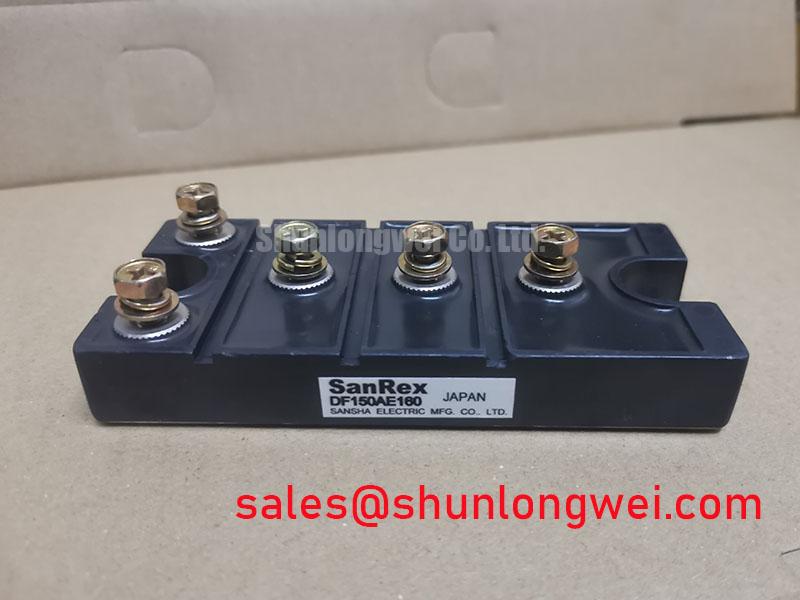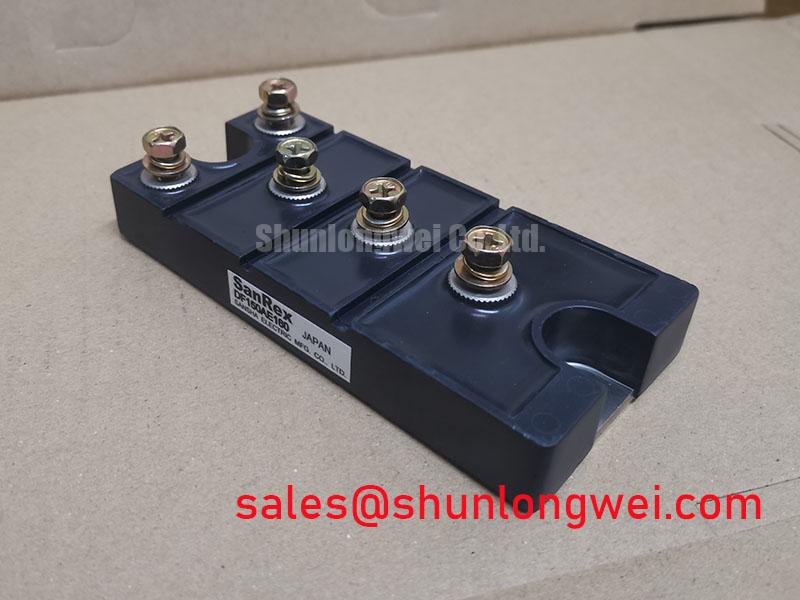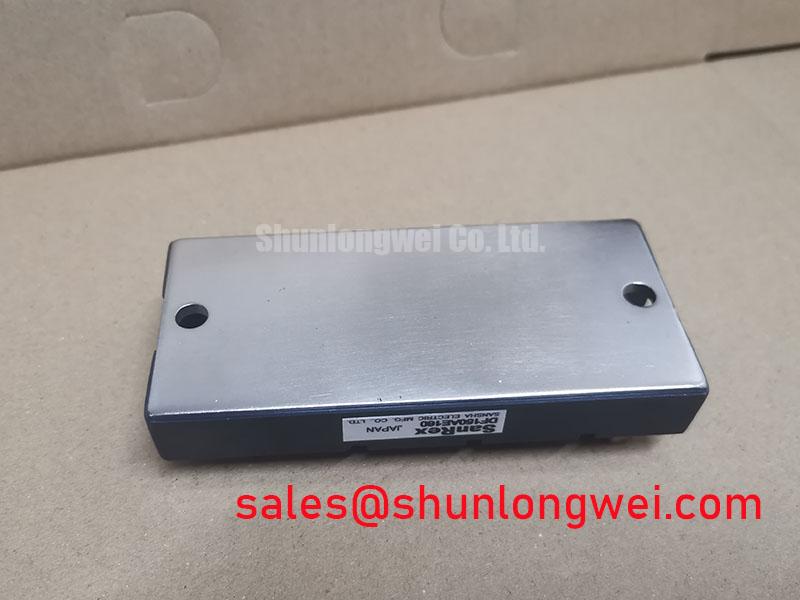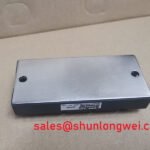Content last revised on November 19, 2025
DF150AE160 Diode Module: Engineering Guide to Thermal Reliability and High-Voltage Performance
An Engineer's Introduction to the DF150AE160
The SanRex DF150AE160 diode module delivers superior thermal performance and high-voltage ruggedness for long-term reliability in demanding industrial power conversion. This module integrates a three-phase diode bridge into a compact, isolated package, featuring key specifications of 1600V | 150A | Rth(j-c) 0.16°C/W. Its primary engineering benefits include significantly enhanced thermal management and high surge current survivability. It directly addresses the need for a reliable front-end rectifier in 690V AC line applications by providing a 3600V isolation voltage, ensuring critical safety margins. For industrial VFDs and power supplies requiring robust thermal design, the DF150AE160's low thermal resistance is a decisive advantage.
Application Scenarios & Value
System-Level Benefits in Industrial Motor Drives and Power Supplies
The DF150AE160 is engineered for the input stages of high-power systems where reliability is paramount. Its robust characteristics make it an excellent fit for applications such as the front-end rectifier for Variable Frequency Drives (VFDs), industrial power supply units (PSUs), and battery charging systems.
A primary engineering challenge in modern power conversion is managing thermal load within compact enclosures. The DF150AE160's exceptionally low thermal resistance of 0.16°C/W per device directly tackles this issue. In a sealed VFD cabinet, this allows designers to maintain a safe junction temperature using a smaller, more cost-effective heatsink, ultimately enabling higher power density and reducing overall system cost. Furthermore, its high surge forward current (IFSM) rating of 2000A provides the necessary ruggedness to withstand the significant inrush currents typical of industrial motor startup sequences, preventing component failure and enhancing system uptime.
For systems demanding higher current capacity up to 200A, the related DF200AC160 offers a similar voltage rating in a compatible package footprint.
Key Parameter Overview
Decoding the Specifications for Enhanced System Ruggedness
The performance of the DF150AE160 is defined by its electrical and thermal characteristics. The following parameters are critical for design and system integration.
| Parameter | Symbol | Value | Conditions |
|---|---|---|---|
| Electrical Ratings | |||
| Repetitive Peak Reverse Voltage | VRRM | 1600V | |
| Average Forward Current | IF(AV) | 150A | Three phase full wave, Tc=96°C |
| Surge Forward Current | IFSM | 2000A | 50Hz, 1 cycle, non-repetitive |
| I²t (for fusing) | I²t | 20000 A²s | 1ms ≤ t ≤ 10ms |
| Peak Forward Voltage | VFM | 1.35V | IFM=150A, Tj=25°C |
| Thermal & Mechanical Specifications | |||
| Thermal Resistance (Junction to Case) | Rth(j-c) | 0.16°C/W | Per Diode |
| Operating Junction Temperature | Tj | -40 to +150°C | |
| Isolation Voltage | Viso | 3600V | AC 1 minute |
| Mounting Torque (Terminals) | - | 2.5 - 3.5 Nm | M5 Screw |
| Mounting Torque (Heatsink) | - | 2.5 - 3.5 Nm | M5 Screw |
Download the DF150AE160 datasheet for detailed specifications and performance curves.
Frequently Asked Questions
Engineering Questions on the DF150AE160
How does the Rth(j-c) of 0.16°C/W on the DF150AE160 impact heatsink selection and overall system size?
A lower junction-to-case thermal resistance allows for more efficient transfer of heat from the semiconductor die to the heatsink. This superior efficiency means that a smaller, lighter, and more cost-effective heatsink can be used to maintain the junction temperature below its maximum limit of 150°C, directly contributing to a more compact and economical system design.
What is the significance of the 3600V isolation voltage for a 1600V repetitive peak reverse voltage (VRRM) module?
The 3600V isolation voltage (Viso) provides a critical safety buffer, ensuring robust electrical separation between the high-voltage circuit and the grounded heatsink. Think of Viso as the strength of the module's internal insulation. This high rating is essential for meeting stringent industrial safety standards like IEC 61800-5-1, especially in systems connected to 690V AC lines where transient overvoltages can occur.
Can the high IFSM rating of 2000A prevent damage during the startup of a large industrial motor?
Yes, the 2000A non-repetitive surge current rating is a measure of the module's toughness. It is designed to withstand the large, brief current pulses that occur when a motor starts, protecting the rectifier bridge from immediate failure. This high surge survivability is a key factor in the long-term reliability of motor drive applications.
Technical Deep Dive
A Closer Look at the Thermal Path: The Role of the Al2O3-DBC Substrate
At the core of the DF150AE160's robust thermal performance is its advanced internal construction, which utilizes an Aluminum Oxide (Al2O3) Direct Bonded Copper (DBC) substrate. This technology is fundamental to achieving both high electrical isolation and an efficient thermal pathway. The DBC structure consists of a ceramic Al2O3 layer to which pure copper layers are directly bonded without any adhesive.
This design provides two distinct engineering advantages. First, the Al2O3 ceramic is an excellent electrical insulator, which is the primary reason the module can achieve its high 3600V isolation rating. Second, it serves as a highly effective conductor of heat. The DBC substrate acts like a multi-lane superhighway for heat. While the Al2O3 ceramic layer is the impenetrable median barrier separating electrical potentials, the thick copper layers bonded directly to it are the express lanes that conduct heat away from the diode junction with minimal resistance. This prevents the thermal "traffic jams" that lead to overheating and premature failure, directly contributing to the module's low Rth(j-c) and its impressive long-term reliability under thermally stressful conditions.
System Design and Integration Support
To ensure optimal performance and long-term reliability of the DF150AE160 in your power system, careful attention to mounting and thermal interface is critical. Utilizing the specified mounting torque of 2.5 - 3.5 Nm guarantees a secure mechanical connection and a low-resistance thermal path to the heatsink. For further inquiries on thermal design, application integration, or to discuss the specific requirements of your project, our team is available to provide technical support.








